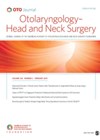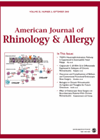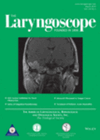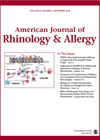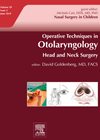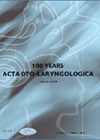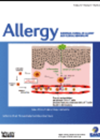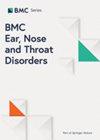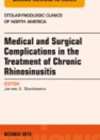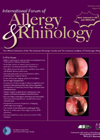
Journal Reviews
Sphenopalatine ganglion block in endoscopic sinus surgery reduces intra and post-operative morbidity
The authors present results of a meta-analysis to investigate the role of sphenopalatine ganglion block (SPGB) in reducing postoperative pain in endoscopic sinus surgery (ESS). An electronic database search (Pubmed, SCOPUS, Google Scholar, Embase, and the Cochrane Register of Controlled...
Balloons – more complicated than first thought?
This study describes the complications seen after balloon sinuplasty (BSP) - a commonly performed procedure (particularly in the USA where it is often performed as an office procedure) versus traditional functional endoscopic sinus surgery (FESS). The data source was a...
Does Tranexamic acid reduce intraoperative bleeding during FESS?
Intraoperative bleeding during FESS can reduce visibility and obscure important landmarks. This can result in longer operative times, increase risks of complications and even lead to incomplete surgery. Tranexamic acid is a drug which prevents fibrinolysis and stabilises blood clots....
A novel way to reduce postoperative nausea and vomiting
This is an interesting RCT which evaluates the prophylactic effect of bilateral endoscopic injection of local anaesthetic in the sphenopalatine ganglion (SPG) on postoperative nausea and vomiting (PONV). It has a robust design, and is sufficiently powered and blinded, with...
The snotty child?
This article is interesting for those of us who see children regularly in secondary care but rarely see them with chronic rhinosinusitis. The authors remind the reader of the EPOS guidelines for diagnosis of CRS in children: two or more...
Balloon compared to FESS – long-term patient satisfaction
Balloon compared to FESS – long-term patient satisfaction This paper is the first controlled study of balloon sinoplasty’s long-term efficacy, with a follow-up extending over five years. There were 208 patients analysed and 88 recruited. Exclusions were nasal polyps grade...
Sinus surgery effects on asthma patients
Chronic rhinosinusitis (CRS) and asthma are related. The authors identified a gap in the literature and designed this study with a relatively large sample size of 86 patients. They included patients with comorbid asthma and CRS with or without polyps...
A review of endoscopic sinus surgery outcomes
This review discusses the outcome measures that may be considered in the assessment of patients with chronic rhinosinusitis (CRS) as well as the outcomes of endoscopic sinus surgery (ESS) published so far. The authors also discuss the role of peri-operative...
Do I need Google maps in here?
Image guidance surgery (IGS) has grown in popularity. This review article discusses its application in endoscopic sinus surgery (ESS). IGS technology has vastly improved with smaller, more mobile platforms that are easy to set up and use. IGS allows validation...
The effect of cocaine or adrenaline dressing during endoscopic sinus surgery
A randomised controlled study of 37 patients took place that underwent endoscopic sinus surgery for chronic rhinosinusitis and received adrenaline or cocaine-soaked patties. The study showed no difference in the mean surgical field scores between adrenaline and cocaine sides. Adequate...

